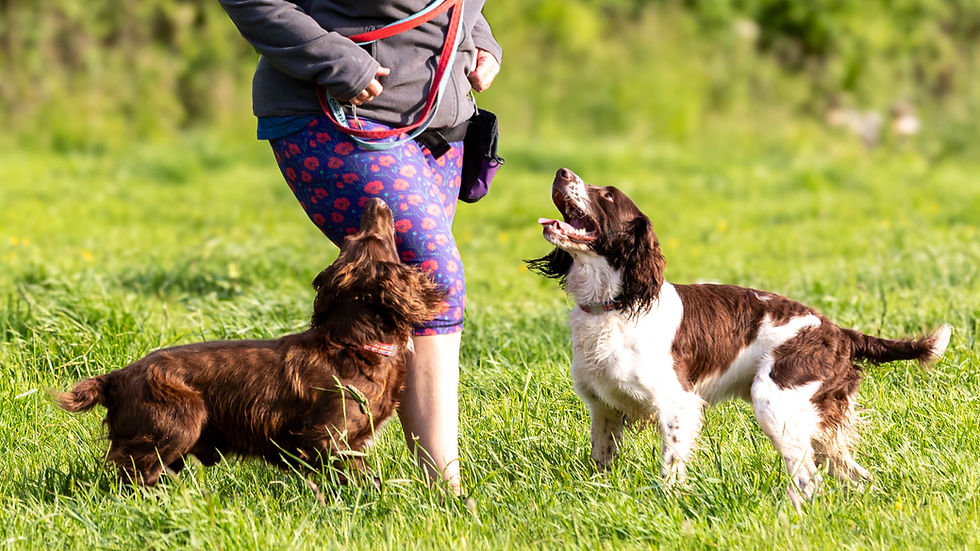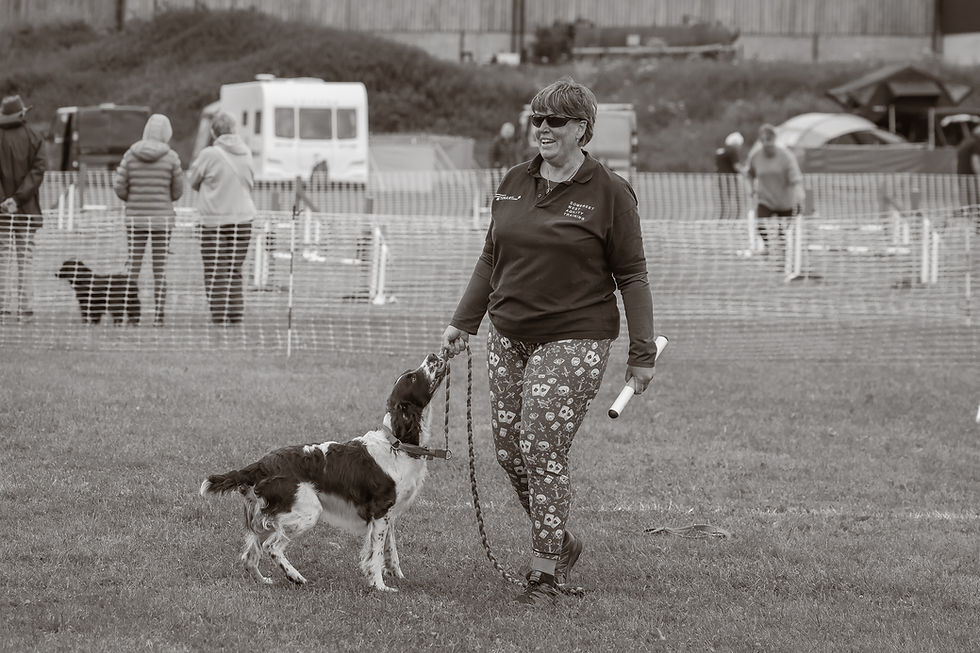12 Ways I Use Food When Training My Dogs
- Sara Seymour

- May 15, 2023
- 4 min read
Updated: May 22, 2025
A common issue I see mentioned goes along the lines of 'I've tried food, but my dog's just not that interested'. At the basic level, food is a primary reinforcer - our dogs need food in order to survive, and it's very rare for a dog to actually starve themselves.
Sometimes, the issue can simply be that you're not making the food more interesting than whatever else is in the environment. So I thought I'd share some of the ways I use food; in every instance here I'm using kibble - you can use 'higher' value food if you like, but I always look at HOW I'm using the food before reaching for something different. That definitely varies between my dogs, and I'll discuss that here too.
Delivered to the mouth - I usually a cue here of 'good'. That tells my dog that I'm going to bring the food to their mouth; this can stop them jumping up at me, or mean they hold their position on a platform/mat.
Take the food from my hand - Peak knows this as 'take'. Ripley doesn't know this one, it's not something I've really needed with him. Peak is quite a mouthy (opportunistic!) dog, and teaching him that I will tell him exactly when he can take the food from my hand has been useful to curb his enthusiasm! I've also found it useful in our loose lead training - I cue 'take' and then keep my hand where I'd like his head to be. In this way, he learns that it's more efficient to stay in position at my side!
Single tossed treat - 'get it' has many uses. Ripley finds movement reinforcing, so doing a few treat tosses helps to keep him engaged, whilst adding value to his his reinforcement. I can also use it to reset my dog when working on go to mat, for example.
Catch - pretty self explanatory! Another useful one to stop my dogs jumping at me; if I cue 'catch' then their weight is going to shift backwards, not forwards. A great option for rewarding behaviours at a distance. I use the same cue for both food and toys here.
Switch - another one I use with both food and toys. This is quite a specific one; it means move behind me from my left side to my right to take the food/toy from my hand. A good one to use to help with a dog that forges in heel - if they're frequently asked to switch for their reward, then it's going to be more efficient to stay in position!
Single treat placed on the ground - I use this one for rewarding in position on a mat/platform as well as in the early stages of contact training for agility. Knowing what 'floor' means ensures they maintain position rather than move. Handy for building duration.
Food scatter - known as 'sprinkles' to my dogs! I will often use sprinkles at the end of a session, but also handy mid-session if I need to move props or just give my dog a bit of a break. A favourite for Ripley, it's useful for breaking up raucous play as well!
Remote reinforcement - this is a really important skill to teach, especially for those that want to do competitive sports with their dogs. The dog learns that when you give a specific cue (I use 'bingo'), then we can go to a previously placed reward. I have a free eBook all about this - grab Delayed Reinforcement: Step By Step.
Shopping - this was a protocol developed by Kay Laurence, and I learned it from Sarah Owings. In essence, the dog learns that when they come across something they might like then they should report to you. It has similarities to remote reinforcement, but here I have an open pot of treats.
Reverse luring - sometimes known as zen hand, this is a protocol I use for increasing duration. Basically, as long as my hand with the treats is open then the dog should keep doing what they're doing. Ripley understands this one really well - I use it a lot in fitness work, but it can also be used for retrieves and scentwork indications.
Food toy - one of Ripley's Very Favourite Things! Firstly, there's food and secondly he really likes the ripping sound velcro makes 😂 A great option for dogs that aren't really into toys, but where you need to be able to throw the reward. I also found it really useful for Peak during our contact and weave training as I can throw it for proper reward placement, but he doesn't have as BIG feelings about it as other toys which means he can think with it in play.
Bowl - great for distraction work. The bowl can be empty to start, or you can have food in it to preplace the reward. My main use of the bowl recently has been for Movement Puzzles - it helps to give really clear information about where the reinforcer will be.
Here's a video showing most of these in action - having lots of different options helps to keep my dog engaged, and because many of them have their own cues I can also see how well they're listening!
Want to learn more about how to start teaching and using some of these food games? Check out my mini-course - Get Your Dog's Attention (And Keep It!)


